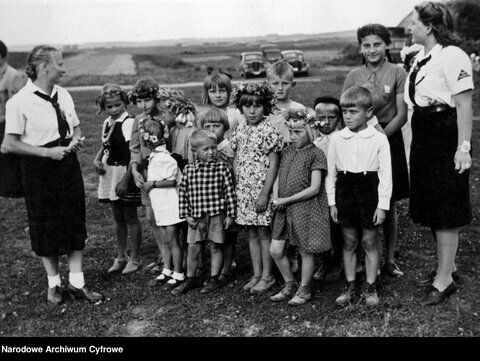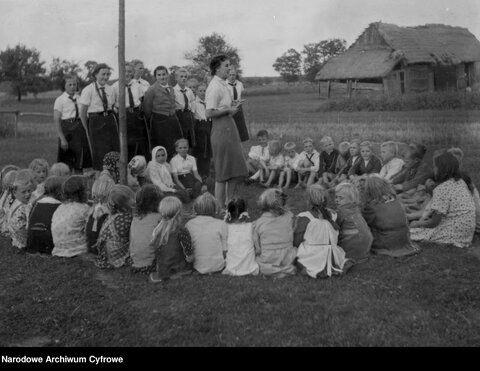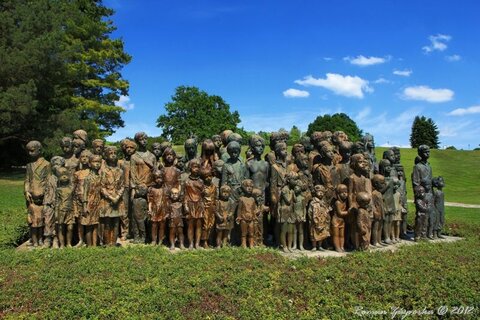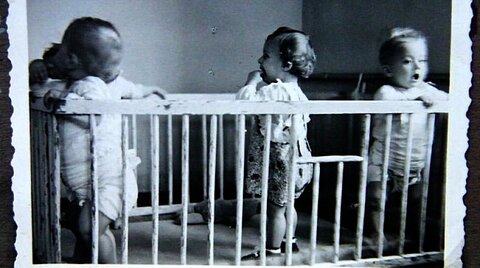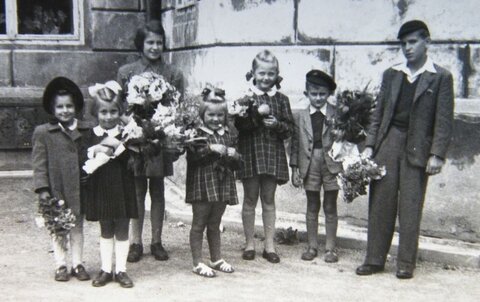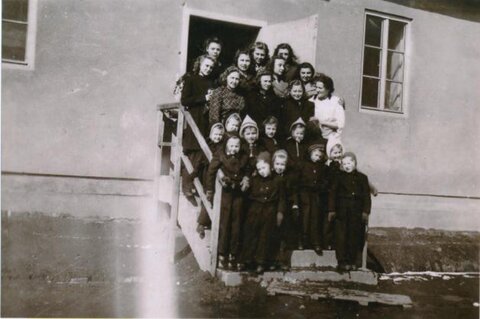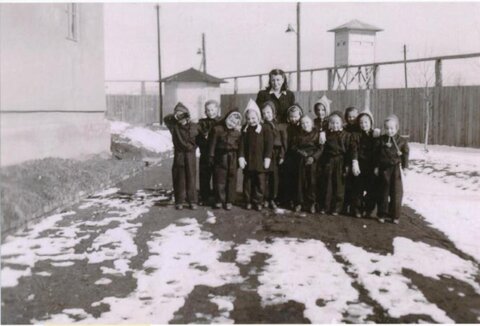- Girls from the Association of German Girls with a group of children. Some of the children are wearing flower garlands on their heads.
- An instructor from the Association of German Girls teaches German songs to rural Volksdeutsche children in the Radom area.
- The Children’s War Victims Monument by Jiří Hampl and Marie Uchytilová
- Children of Lidice
- Children of Lidice (Left to right: Veronika Hanfová Libuše Müllerová, behind: Věra Vokatá Jana Müllerová Hana Špotová Václav Zelenka Václav Hanf)
- Children of Svatobořice, 1944
- Children of Svatobořice with their teacher Ms. Marková, 1944
Learning Platform about stolen children during the Second World War and contemporary violations of children’s rights
Using these materials, you can introduce young people, either in school or in an out-of-school setting, to the history of stolen children during the Second World War and address the topic of contemporary violations of children’s rights.
Learn more about the history of the stolen children
- personal stories
- contributions by experts
- various formats: text, podcast
- from German, Polish, Czech and Ukrainian perspectives
Discover the learning materials
- adaptable
- ready for use straight away
- attractively designed
- created by experts in non-formal education
